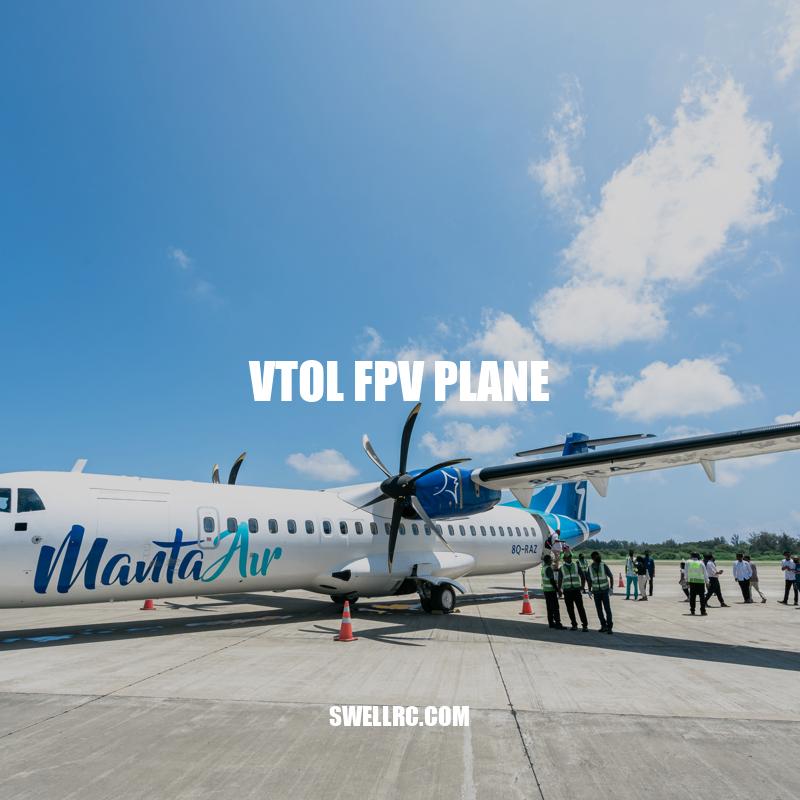VTOL FPV Plane: The Ultimate Aerial Surveillance Tool
The VTOL FPV plane is an unmanned aerial vehicle that has been making waves in the world of aerial surveillance and data collection. This innovative aircraft combines vertical take-off and landing capabilities with first-person view technology, allowing it to reach almost any location and capture high-quality footage. The VTOL FPV plane is equipped with powerful cameras that can capture high-resolution images and videos from multiple angles. It also has GPS tracking systems that enable operators to guide and navigate its movements precisely. Moreover, the VTOL FPV plane can be fitted with various sensors and payloads to increase its capabilities, such as infrared cameras to see in the dark and sensors to detect gas leaks. With the ability to hover and fly in tight spaces, the VTOL FPV plane has become an essential tool for surveying areas that are difficult to reach or too dangerous for human operators. Its cost-effective and efficient operation makes it an attractive option for industries such as oil and gas, firefighting, and environmental monitoring. The VTOL FPV plane’s performance in military reconnaissance and surveillance missions also proves promising for the future of unmanned aerial vehicles. While the VTOL FPV plane comes with specific challenges, future developments such as enhanced sensors and improved battery life pave the way for a brighter future in aerial surveillance and data collection.
Key Features and Benefits of VTOL FPV Planes
VTOL FPV planes offer several advanced features and benefits that make them highly effective in aerial surveillance. Some of these features and benefits include:
- Powerful cameras that capture high-resolution images and videos from multiple angles.
- GPS tracking systems that allow operators to guide and navigate the movements of the drone precisely.
- Various sensors and payloads can be added to enhance the drone’s capabilities, such as infrared cameras and gas detectors.
- The ability to cover vast areas quickly and more cost-effectively than using helicopters or planes.
- The capacity to fly in tight spaces and hover.
- Can detect and track wildlife and vegetation in conservation areas.
- Inspect pipelines and oil rigs and conduct search and rescue missions during disasters.
- Capture high-quality aerial footage of construction projects, architecture, and real estate from every angle.
The VTOL FPV plane‘s features and benefits are making it a popular tool across various industries, including oil and gas, firefighting, environmental monitoring, and military operations. Many manufacturers offer a range of VTOL FPV planes, such as the Skydio 2, the Parrot Anafi USA, and the DJI Mavic 2 Enterprise Dual, among others. Interested buyers can compare features and prices online on websites such as Amazon or directly from the manufacturer’s website.
What are the advantages of VTOL aircraft?
VTOL aircraft offer improved safety and enhanced reliability compared to traditional drones. With no need for a long runway, the risk of accidents during takeoff and landing is significantly reduced. Additionally, VTOL drones can maintain stable flight even in conditions where traditional drones may struggle, such as strong winds or uneven terrain.
Uses of VTOL FPV Planes for Industrial Applications
VTOL FPV planes are finding incredible use in different industrial applications. These drones have been a game-changer, especially in hazardous terrain where a human operator may face difficulties, such as flying over active volcanoes and inspecting pipelines that run under the sea. Here are some examples of how VTOL FPV planes are being used across industries:
Industry – Oil and Gas, Applications –
- Inspect pipelines and oil rigs
- Detect gas leaks and prevent major accidents
- Assess damage caused by natural disasters such as hurricanes.
Industry – Firefighting, Applications –
- Map potential fire areas and plan out an emergency procedure.
- Monitor the spread of the fire for deploying appropriate resources.
- Assess fire-damaged structures using thermal cameras.
Industry – Environmental Monitoring, Applications –
- Track wildlife, vegetation, and landscape changes over a long period.
- Perform soil testing for erosion, soil degradation, and plant depletion.
- Monitor air quality, water quality, and noise pollution levels.
Industry – Construction and Infrastructure, Applications –
- Visualize and map out the structure, cracks, and potential weaknesses.
- Accurately calculate project sites and provide 360-degree aerial footage of the projects.
- Create 3D models and maps of structures and construction sites.
One interesting fact about VTOL FPV planes is that they enable surveying areas that were previously impossible, such as inspecting wind turbines that can be hundreds of feet in the air or searching for damages caused by natural disasters in dangerous locations, making the work of human operators easier and safer.
Several VTOL FPV plane models are available, and interested buyers can compare specifications and prices online on websites such as Amazon or directly from the manufacturer’s website.
What is FPV aircraft?
FPV aircraft stands for First Person View aircraft. It refers to a type of remote-controlled aircraft that has a camera mounted on it, which transmits a live video feed to a pair of goggles or a monitor worn by the operator. This gives the operator a unique first-person perspective and allows for more precise control of the aircraft. The Flight Path Vector or FPV helps in determining the flight path angle. For more information and products related to FPV aircraft, you can check out websites such as hobbyking.com and getfpv.com.
VTOL FPV Planes in Military Operations
Not only has the VTOL FPV plane been a crucial development for industries, but it has also significantly revolutionized the military’s surveillance capacity. Some of the key uses of VTOL FPV planes in military operations are:
- Reconnaissance and Surveillance: The drone can fly undetected over enemy territories and gather valuable information regarding their locations and activities.
- Search and Rescue: The drone can quickly access dangerous areas, provide soldier locations, and obtain actionable information for rescue operations.
- Disaster Relief: The VTOL FPV plane can provide real-time aerial footage of affected areas during natural calamities, enabling timely rescue and relief operations.
- Border Control: The drone can carry out reconnaissance operations along the country’s borders, providing valuable data for tracking illegal immigrant and smuggling activities.
The benefits of employing the VTOL FPV plane in military operations are immense, ranging from gathering intelligence to disaster relief. Military forces worldwide invest heavily in the drone’s development, with the current trend emphasizing swarming (large numbers of drones flying in formation) to further enhance effectiveness.
One product that is gaining attention in the military market is the Altius-600 VTOL. The drone comes with advanced sensors and cameras and a fly range of over 5 hours. Interested consumers can learn more about this and other VTOL FPV plane models on the manufacturer’s website.
What is VTOL for military?
VTOL stands for “Vertical Take-Off and Landing”, which refers to an aircraft’s ability to rise up off the ground and descend back down in a vertical manner. In the military, VTOL aircraft are particularly useful for their flexibility and the fact that they can operate in confined or remote areas. The first VTOL aircraft, the Ryan X-13 Vertijet, was developed for the US Navy in 1947 as a tailsitter design. Since then, numerous VTOL aircraft have been developed for military use. For more information about military aircraft design and development, you can visit websites such as Military.com or Boeing’s Defense, Space & Security website.
Conclusion
Despite the challenges that come with the development of VTOL FPV planes, their benefits outweigh them significantly. These drones have become the go-to option for various applications, including aerial surveillance, surveying, and data collection operations across several industries.
VTOL FPV planes have proven their worth in industrial applications like oil and gas exploration, construction, real estate, and military operations, among others. Their compact size and versatility have made them the preferred choice of businesses and governments across the world.
Although the VTOL FPV planes still have some limitations to consider, including battery life, collision avoidance systems, and flight stability, they are constantly improving. Manufacturers have been developing enhanced cutting-edge technology to overcome these challenges and improve future models.
In conclusion, the VTOL FPV plane is a revolutionary drone that has significantly transformed different sectors offering new perspectives and opportunities. The advancements made in the recent past are just the beginning, and the future will undoubtedly see a significant rise in the drone’s capabilities and applications in industrial and military fields alike.



